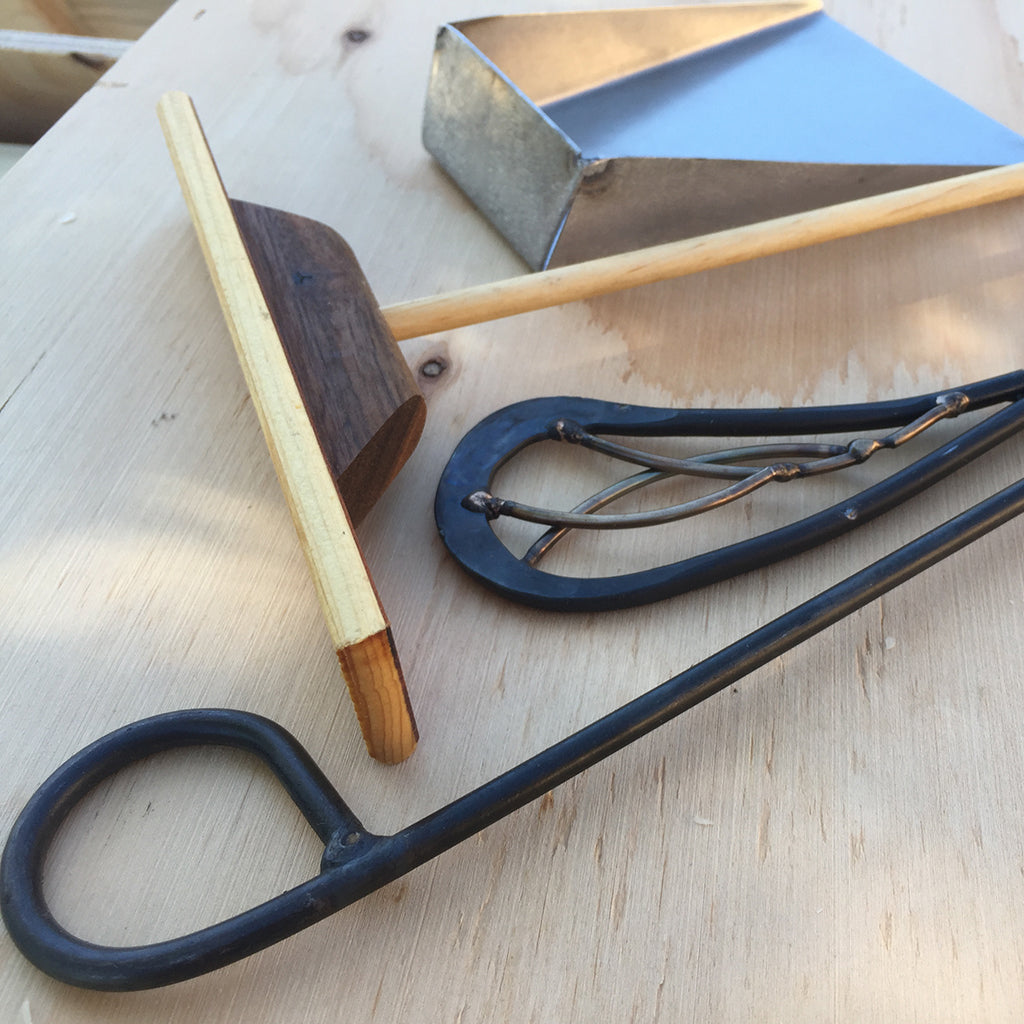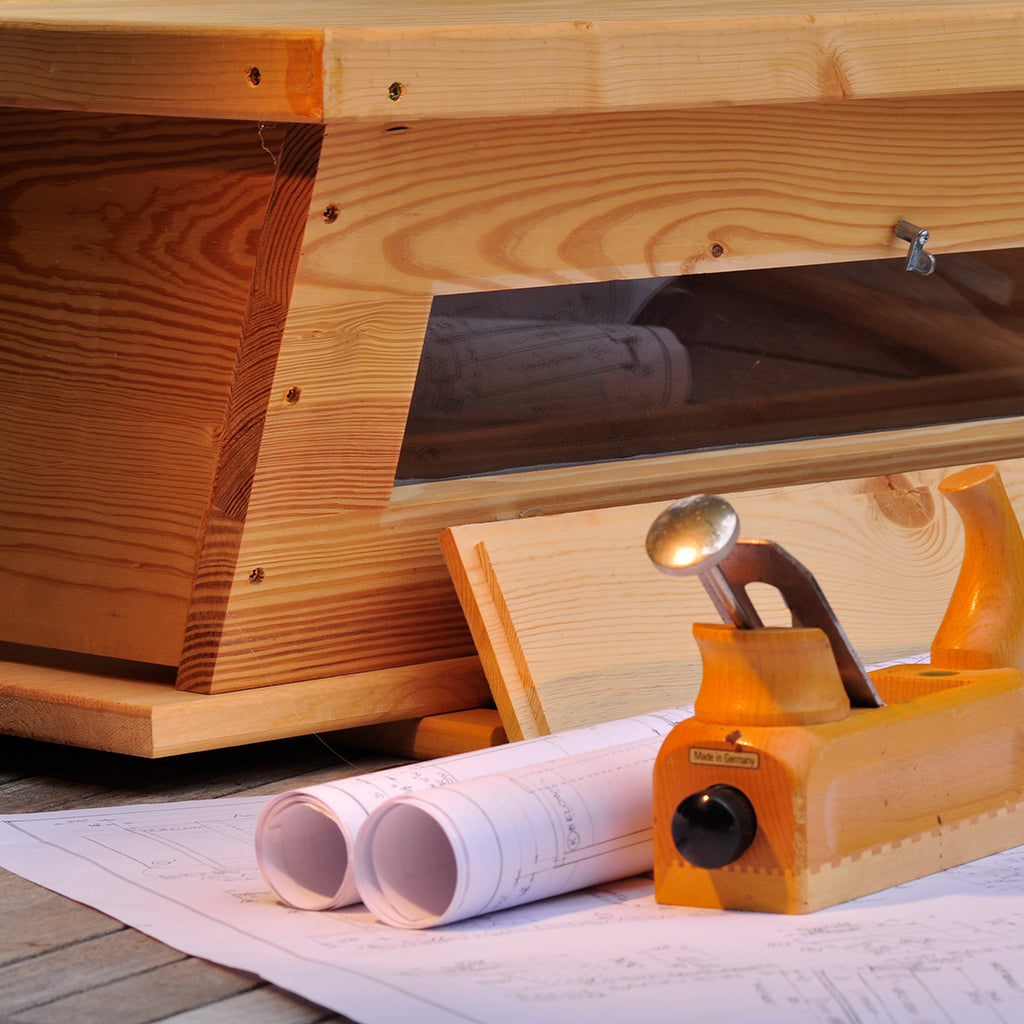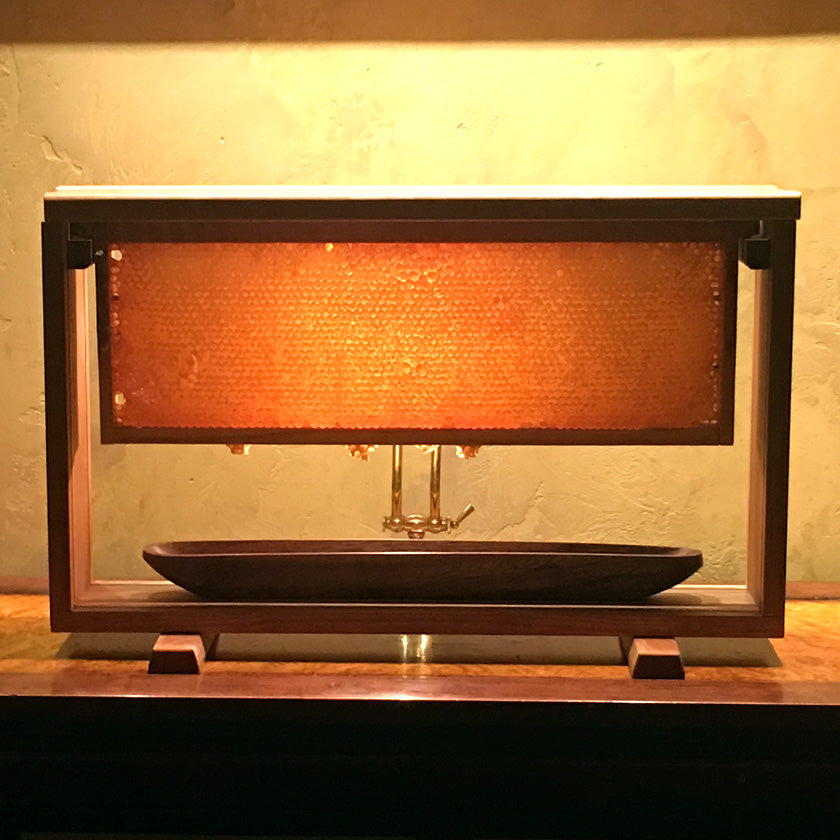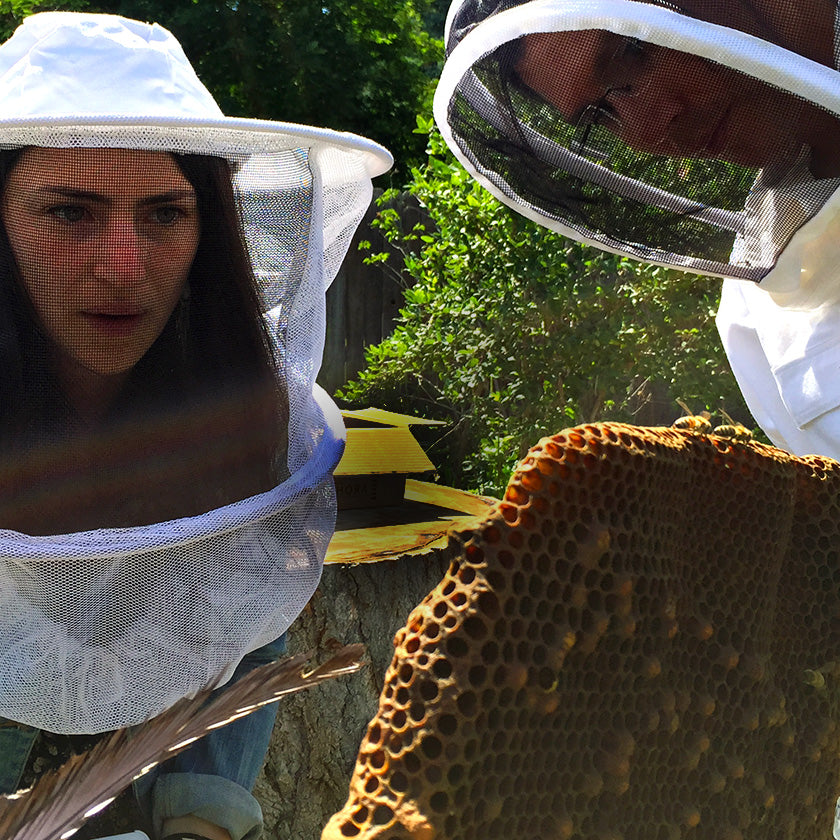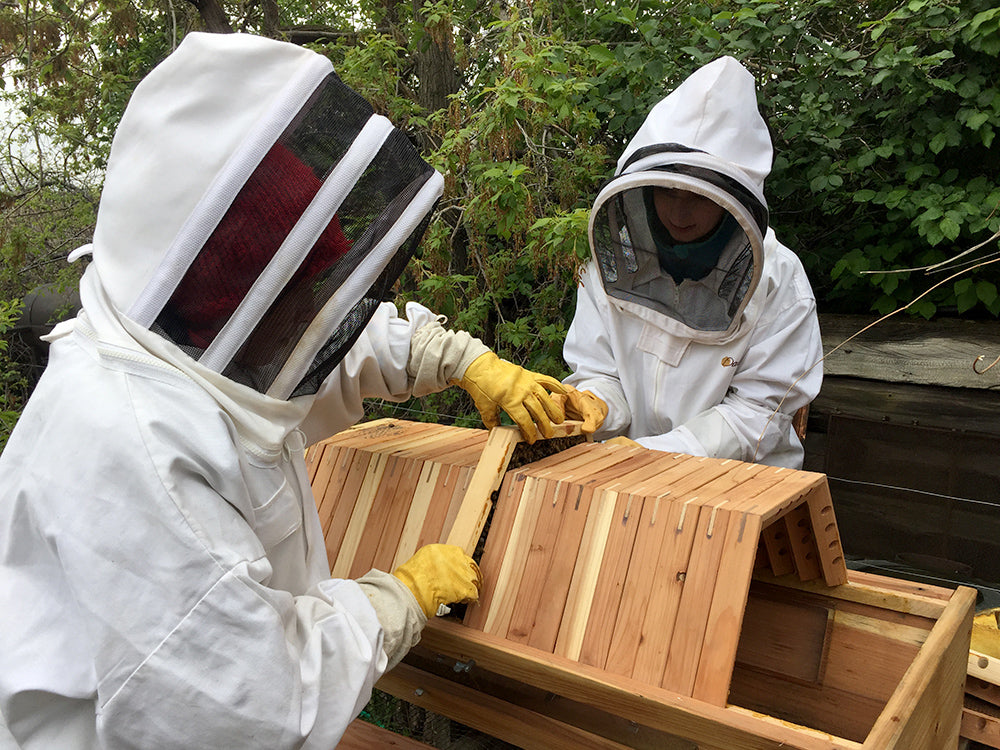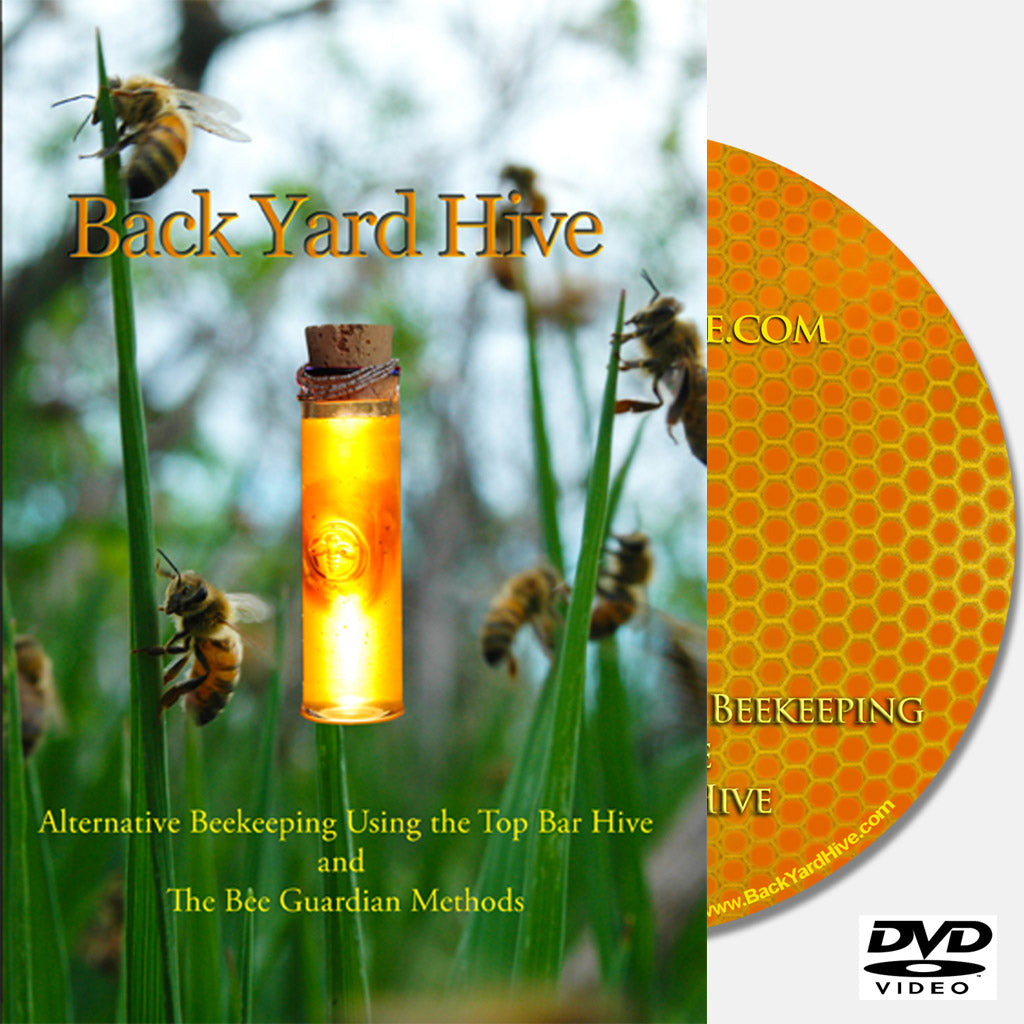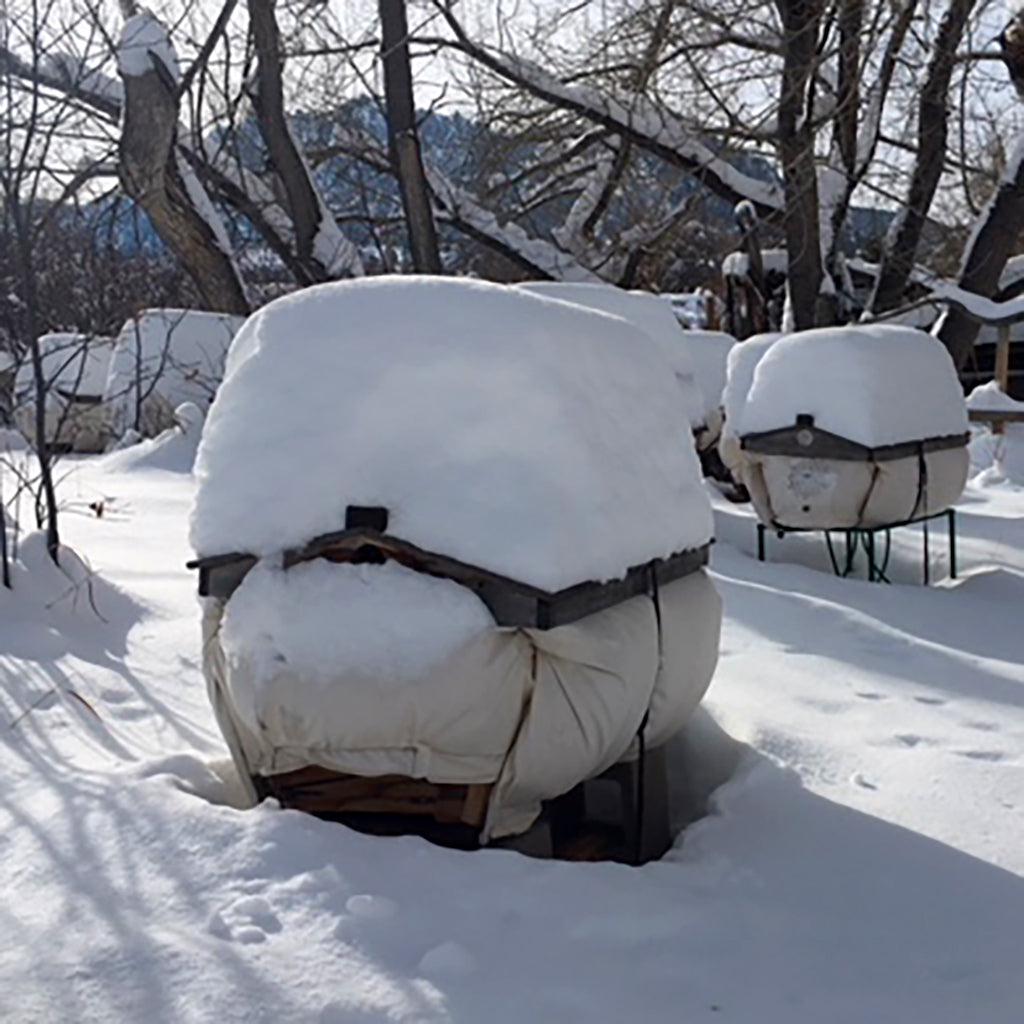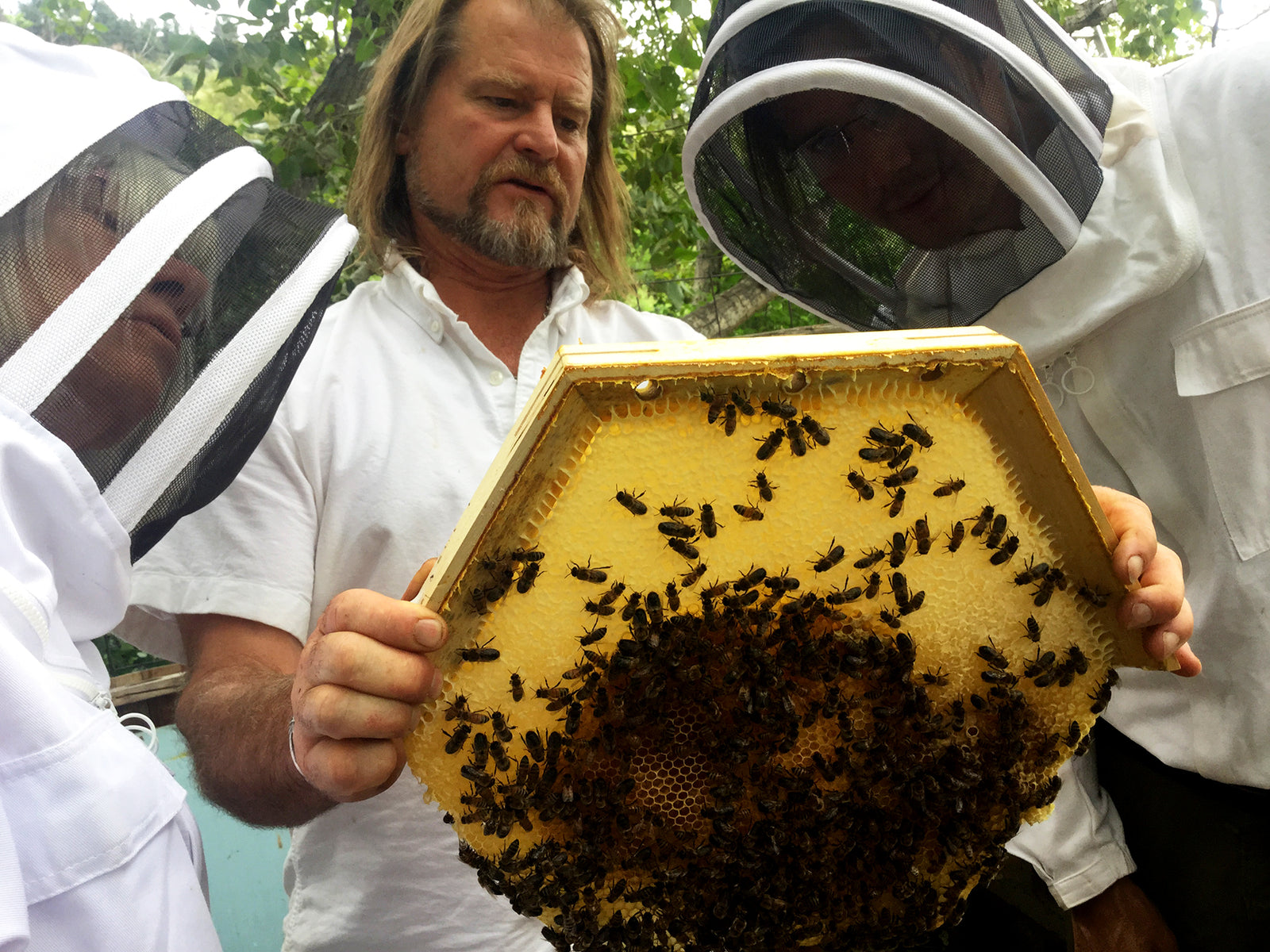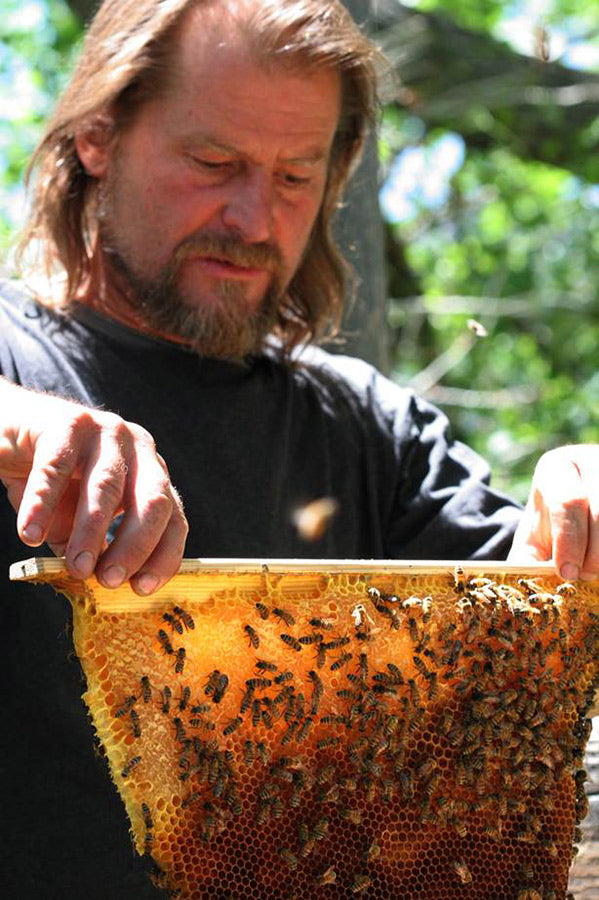Beginner Beekeeping Steps to Get You Started With a Top Bar Hive
If you are just starting beekeeping or thinking about starting, then this is the time to catch the wave to get setup for bee season. The first year of caring for bees in the top bar hive is a simple setup.
You will need to:
1) Purchase or build a hive
2) Find a resource and order bees
3) Find a location for your hive
4) Purchase protective clothing
5) Learn all you can about beekeeping!
6) Coat the top bars with beeswax
7) Install the swarm or package of bees
8) General questions for setting up a hive
1) Buy or Build a Bee Hive
Purchase a fully assembled hive from our Beehives for Sale page, BackYardHive, or build your own from the Bee Hive Plans on our website. We offer fully assembled hives since many folks don't have the wood shop or the time to build their own hives.
If you build a hive from our plans, we highly suggest you purchase top bars as the top bars are the most difficult part of the hive to make. We also offer a Top Bar Hive Package, which includes top bars, hive plans, spacers, and hardware. We find that having precise dimensions for the top bars encourages the bees to build straighter comb which leads to a better beekeeping experience in the hive.
We also suggest that you build the hive with the glass viewing window, this is an amazing feature that you will not want to leave out. The window allows you to observe the progress of the bees without having to disturb the colony. This also gives you the opportunity to check on your bees anytime you'd like.
2) Find a resource for a swarm, or order bees
January or February is the time to order a package of bees or get onto a local swarm list. Bee Package Suppliers start selling their packages in the winter in preparation for a spring delivery of a package of bees. Bee Packages normally arrive in April, depending on your local climate. The weather needs to be warm enough for the bees to be put into a hive and there to be available nectar and pollen in your area for the bees to start collecting to feed their young they will start rearing. Bees start swarming in the spring. Most colonies will start swarming in April unless you are in a warmer region like the southern US and swarming can start as early as March.
Refer to our How to Get Bees for my Backyard Hive post it covers all the options for getting bees for your hive.
3) Placement of your bee hive
You will want to place the entrance of the hive away from foot traffic. The less foot traffic at the entrance of the hive the better for the bees, you and your friends. You'll need to consider the winter weather in your area and the direction of the wind. Face the hive entrance away from strong winter winds. The ideal direction would face somewhere between east and south. It is a good idea that the hive gets some shade in the afternoon in the summer and plenty of sun in the winter months. A great place for this is under a deciduous tree, where it is shaded in the afternoons in the summer, or on the east side of a building where the hive gets the warmth from the dawning sun and shade in the afternoon. You may also want to raise the hive off the ground a few feet so that it is easier to work with; a couple of cinder blocks works well for this. Level the hive, with the lid off, from front to back and from side to side. You may have to adjust the ground, or add shims under the feet of the hive.
4) Purchase Protective clothing for working with the hive.
Protective clothing means different things to different beekeepers.
When bees are being installed into the hive, they are not as aggressive or defensive as they can be once they have established. This means that they won't be concerned with stinging because they are concerned with finding their new home and colony. But you may want to wear a veil and protective clothing when first starting out with beekeeping. This helps you feel comfortable around the bees, allowing more concentration on your task. Purchase a bee suit, bee helmet and veil and protective gloves from our BackYardHive Protective Gear shop. You can also wear thick clothing, closing all arm and leg sleeves. Wrapping duck tape works well for this. And if you are in question about being allergic, you should get tested by your doctor.
5) Learn all you can about getting started in beekeeping
Our new DVD is extremely helpful in getting started. It is an hour and half in length and covers everything you need to know about getting started with 15 Chapters teaching Choosing a Location for your Hive, Setting up a Hive, Finding Bees for your Hive, Capturing Bee Swarms, Introducing Bees into Your Hive, About the Bee Colony and its Organization, Working Safely and Gently with Your Bees, Harvesting and Processing Honeycomb from your Hive, Seasonal Beekeeping Tasks plus HD footage of Corwin Bell working in a bee hive showing you how to manage a bee hive. The DVD is beautifully filmed with clear instructions, live footage and animated sequences to show you how to work in your new hive. Get a copy of our Bee Guardian Methods DVD.
6) Coat the top bars with melted down beeswax
(paraffin will not work it needs to be natural bees wax) Coat only the 'spine' of the top bars. This encourages the bees to build comb on this 'spine'. You can order beeswax on our website or purchase it from your local art supply store.
7) Install the bees into the hive
Put all the top bars on the hive. Now it is time to install the bees into your hive. How many top bars you will need to remove and where you choose to put the false back, depends on the size of your swarm or colony. Typically, we suggest to insert your false back 10 bars from the front of the hive, this is important as it helps to establish the brood nest in the front of the hive. Remove 5 or more bars between the entrance and false back to install the bees into hive. If it's a package of bees the queen comes in a separate cage. Place this on top of the hive until the bees are installed in the hive. Give the box with the bees in it, a couple good stern shakes as you empty the bees into the hive. If needed give the box another stern shake, to get most of the bees into the hive. If the queen came in a cage you can put her into the hive with the bees; suspend the cage between the 3rd and 4th bars from the entrance. If you are installing a swarm make sure you locate the ball of bees on the lid of the box and carefully move the ball above the opening and give the top of the lid a stern pound, or shake. Then gently yet firmly shake the bees in the bottom part of the box into a corner, turn the box upside down and shake them into the hive. There will be bees flying all around. Hopefully, most of them are in the hive. Put all but 1 bar back on the hive.Whether it's a package of bees you bought ,or a feral swarm, you will want to make sure the queen is in the hive. They will soon start to fan, this is the bees calling out to each other "Hey, we are over here..the queen is here everyone get in!!" It can take about an hour or so for all the bees to find their way into the hive, replace your last top bar. In a couple of days, release the queen over the hive into the top of the hive , it is important that you do not drop her on the ground, so do all of your work over the hive where the top bars are removed so if she falls, she goes into her home. In 3-7 days move the false back all the way to the back of the hive, put in your spacers, and move the bees and combs 3 bars from the hive entrance, this will get the brood nest right where you want it.
General questions about setting up a bee hive
What Hive Tools do I need for working with my bee hive?
Your hive tool is one of the essential pieces of beekeeping equipment you will need to work with your hive.If you only get one tool the ultimate Hive Toolspecially designed by Corwin Bell The ultimate Hive Tool that is versatile and the best choice for working your bee hive whether it is a top bar hive, Warre or Langstroth. An all-in-one sturdy hive tool for easily removing combs and prying apart top bars when working with your hive.
How many hives can I start at once?
You can start as man hives as you feel comfortable managing. If you can build or buy more than hive it is a great idea to start with more than one hive as your learning curve doubles with 2 or more hives. Each hive will have a different personality and will have different traits like how fast they build combs, how much they guard the hive, how much they use propolis in their hive, the list goes on.
How far apart should my bee hives be?
It is perfectly fine to put the hives in close proximity. Here are some things to think about.
1. You want enough room to walk between the hives and be able to work around each hive. The biggest problem for me has been when I am harvesting honey in one hive and the adjacent hives’ bees catch wind of the honey smell. I now have increased the number of bees landing on the combs I am trying to work. This is one reason I like to do the the single comb harvest with my hives that are close together. I can go in and remove a comb before any of the "other" bees get what's going on.
2. If the hives are close together they get used to each others’ proximity and scent and let their guard down, which sometimes results in them robbing the other hive. Disease can more easily spread and infect hives in close proximity; this is much of the problem with big honey apiaries. I like to give the bees their own local territory. If you have the room I would put the hives several hundred feet away from each other. Otherwise 4 to 5 feet or enough room to walk between them and still be able to work the hive.
3. I get different honey from these hives.
A scenario might be; my #1 hive is right next to an apple tree will be a dark "apple honey" and the #2 hive, in the side-yard is going after the melon patch and the plum bushes across the road.
One of my favorite bee keeping joys is seeking out mono-flora areas. I drive and look for sunflower fields, different flowers down by a lake or fields with wild flowers. I will then put a hive in this area for a couple of months just to see what the flavor and color of the honey is.
Can I install two hives at the same time?
If the hives are thirty feet away or more, you could install them at the same time, although thirty feet is really an arbitrary number - the main thing to consider is the time when the bees formed their colony and regrouped. When the first bees installed have stopped "fanning", then you can install the second colony of bees. Fanning is pretty neat to watch. The bees that are around the new hive will put their abdomens up in the air and rapidly fan the air. The bees are putting out pheromones and sonic vibrations signaling their buddies where the queen and the new hive are. So you can imagine if two colonies are doing this at the same time, it could be a little confusing.


